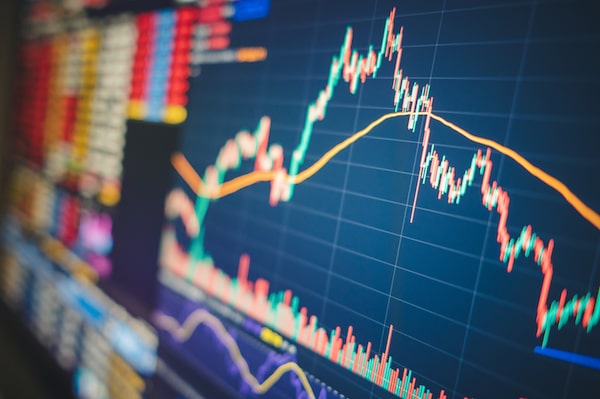
Owning growth and value ETFs for their different exposures can be a smart investing strategy.Getty Images
In one corner are value factor exchange-traded funds (ETFs), which assess stocks based on how much they are discounted by the market. In the other are ETFs taking a growth factor approach, selecting the heavyweights of today’s and future stock markets.
Call it a factor fight, with many investors wondering which approach is superior.
Owning value and growth factor ETFs together can be the winner, says Etienne Joncas-Bouchard, an ETF specialist with Fidelity Investments in Toronto. “These approaches often perform differently in different markets.”
He adds that ETFs with value and growth slants might also give investors better diversification than just holding passive index ETFs such as iShares Core S&P/TSX Capped Composite Index ETF (XIC-T) or the SPDR S&P 500 ETF (SPY-A).
“Holding only these core index strategies likely will get you from point A to point B long-term. But the problem is you are often holding many companies that aren’t cheap or growing very fast,” says Mr. Joncas-Bouchard.
Even these passive indices do provide exposure to growth and value, he notes. XIC offers more of a value slant because “our market is more heavily weighted in cyclical sectors, which often trade at a discount.”
SPY has seen strong performance year to date, driven by growth stocks, or more aptly the “magnificent seven.” These mega-cap tech firms – which include NVIDIA Corporation (NVDA-Q), Microsoft Corp. (MSFT-Q) and Amazon Inc. (AMZN-Q) among other high-profile names – account for about 27 per cent of the S&P 500′s total market capitalization.
Yet a passive NASDAQ-tracking ETF, such as the Nasdaq QQQ Invesco ETF (QQQ-Q), is actually an even better way to capture growth because it’s more heavily weighted with these companies, says Jeff Kaminker, president of Frontwater Capital in Toronto.
Sector exposure ETFs can also provide exposure to growth and value, says Mark Yamada, president and chief executive officer of PUR Investing Inc., in Toronto.
As an example of a sector ETF with the characteristics of value, he cites BMO’s Equal Weight Banks Index ETF (ZEB-T). It only holds Canada’s largest six banks, which have not had a price-to-book valuation this low since the 1990s. “And price-to-book is the line-in-the-sand metric for value investing,” says Mr. Yamada.
This metric looks at a company’s share price relative to its assets, and reflects how the banks’ share prices have fallen significantly due to housing market crash anxieties, while their balance sheet assets remain robust. But the big banks have a good margin of safety against a housing crash, Mr. Yamada explains, and the ETF has a combined dividend yield exceeding 5 per cent.
Growth investors who are worried about “magnificent seven” overexposure can look to Invesco’s NASDAQ Next Gen 100 ETF (QQJR-T), he says. “These are companies involved in technologies that are not mainstream yet.” That includes the advanced data analytics platform provider Splunk Inc. (SPLK-Q).
Investors can also select non-sector specific growth and value factor ETFs, including Fidelity’s U.S. Value Index ETF (FCUV-T). “If you compare it to a NASDAQ ETF, it has very different holdings,” Mr. Joncas-Bouchard says.
FCUV holds growth names such as Apple and Microsoft, but it also includes large U.S. oil and gas firms and Berkshire Hathaway Inc. (BRK-B-N).
A value approach may be advantageous today, given it generally fares better amid higher rates, Mr. Joncas-Bouchard says. Value stocks also often do well early in recoveries, and have a superior long-term track record, Mr. Joncas-Bouchard adds. “Over a 30-year period, value has actually outperformed growth.”
Still, in the last decade or more, he notes that growth stocks have outperformed because low rates bolster their future revenue growth expectations.
Vanguard’s Growth ETF (VUG-A) and Value ETF (VTV-A) illustrate some of these differences. VTV decreased about 2 per cent (total return) in 2022, while VUG fell about 33 per cent. This year, as of Oct. 31, VUG is up about 25 per cent while VTV is down 2.5 per cent. And since their launch in 2004, VUG has an annualized return of 9.99 per cent versus VTV’s 7.9 per cent.
Given value’s underperformance over nearly two decades, investors might infer that higher rates set the table for it to outperform again. Yet don’t overlook growth, Mr. Yamada cautions.
“We may be on the edge of significant AI [artificial intelligence] breakthroughs that will have massively beneficial impacts, so there could be more growth for growth stocks.”
For investors who don’t know which to choose, Mr. Kaminker says an ETF such as SPY actually offers growth exposure via the “magnificent seven” and value in the hundreds of other companies on the S&P 500 that are likely undervalued. He considers it a hybrid tactic for current market uncertainty.